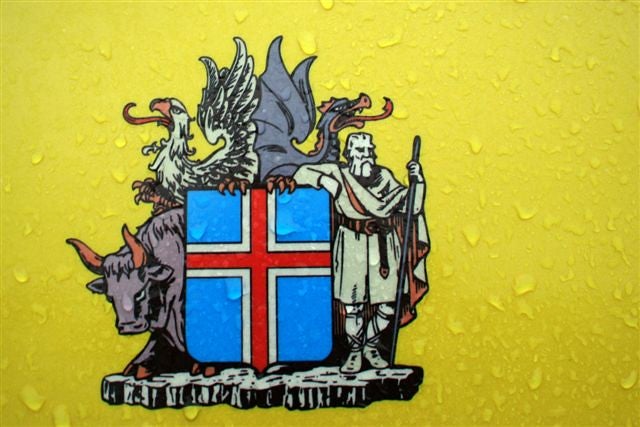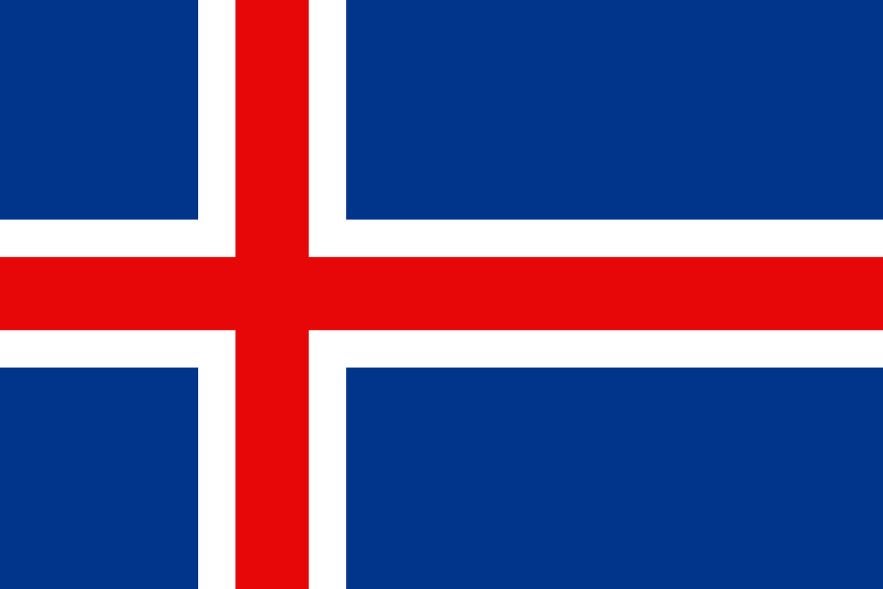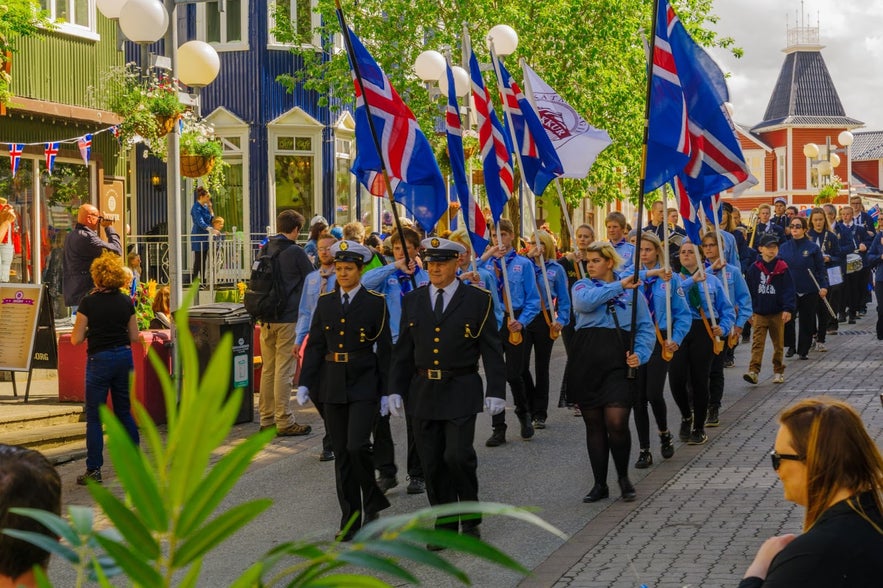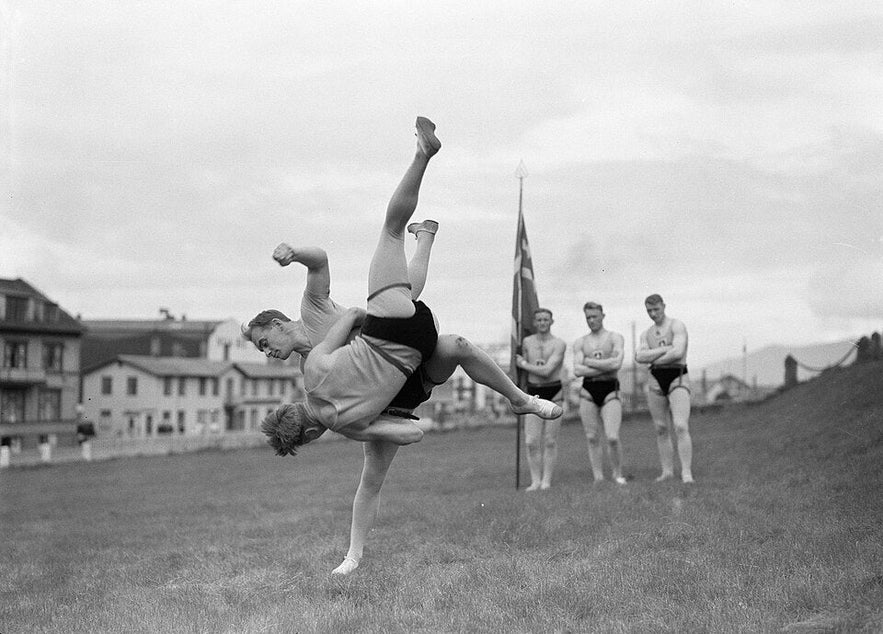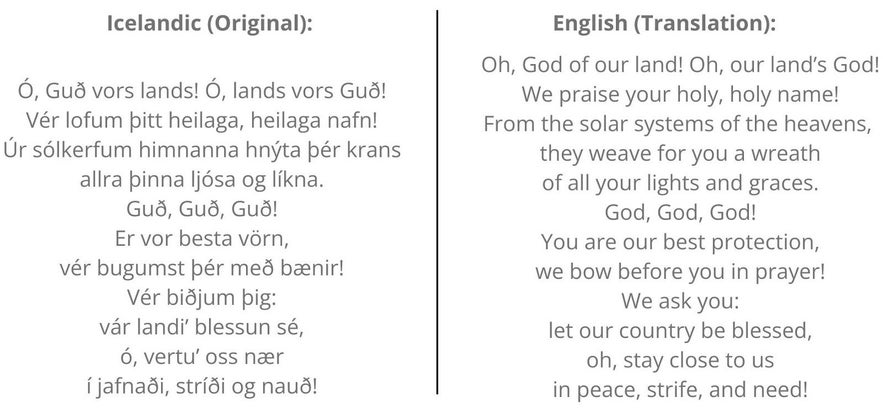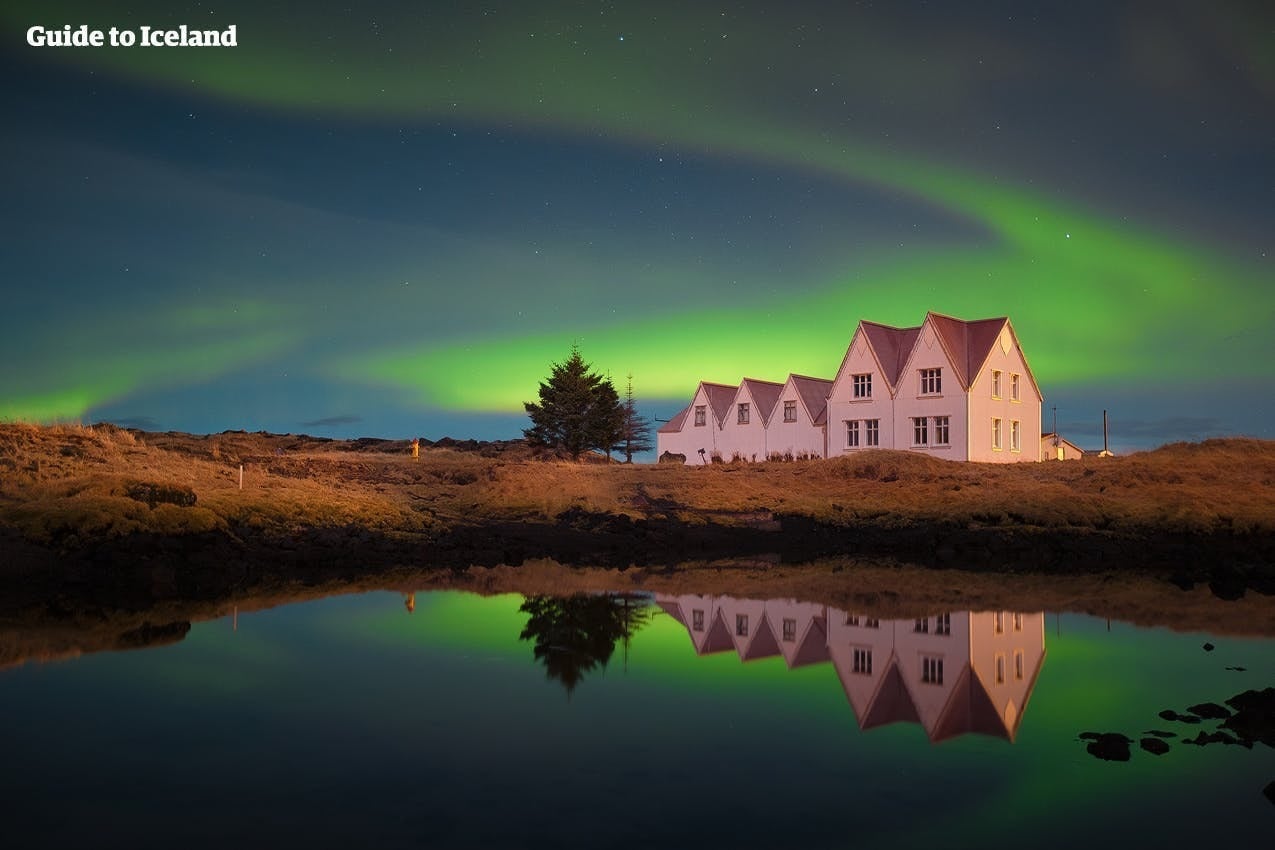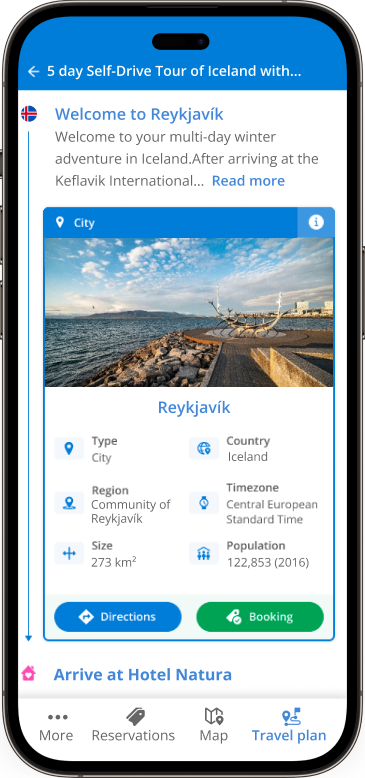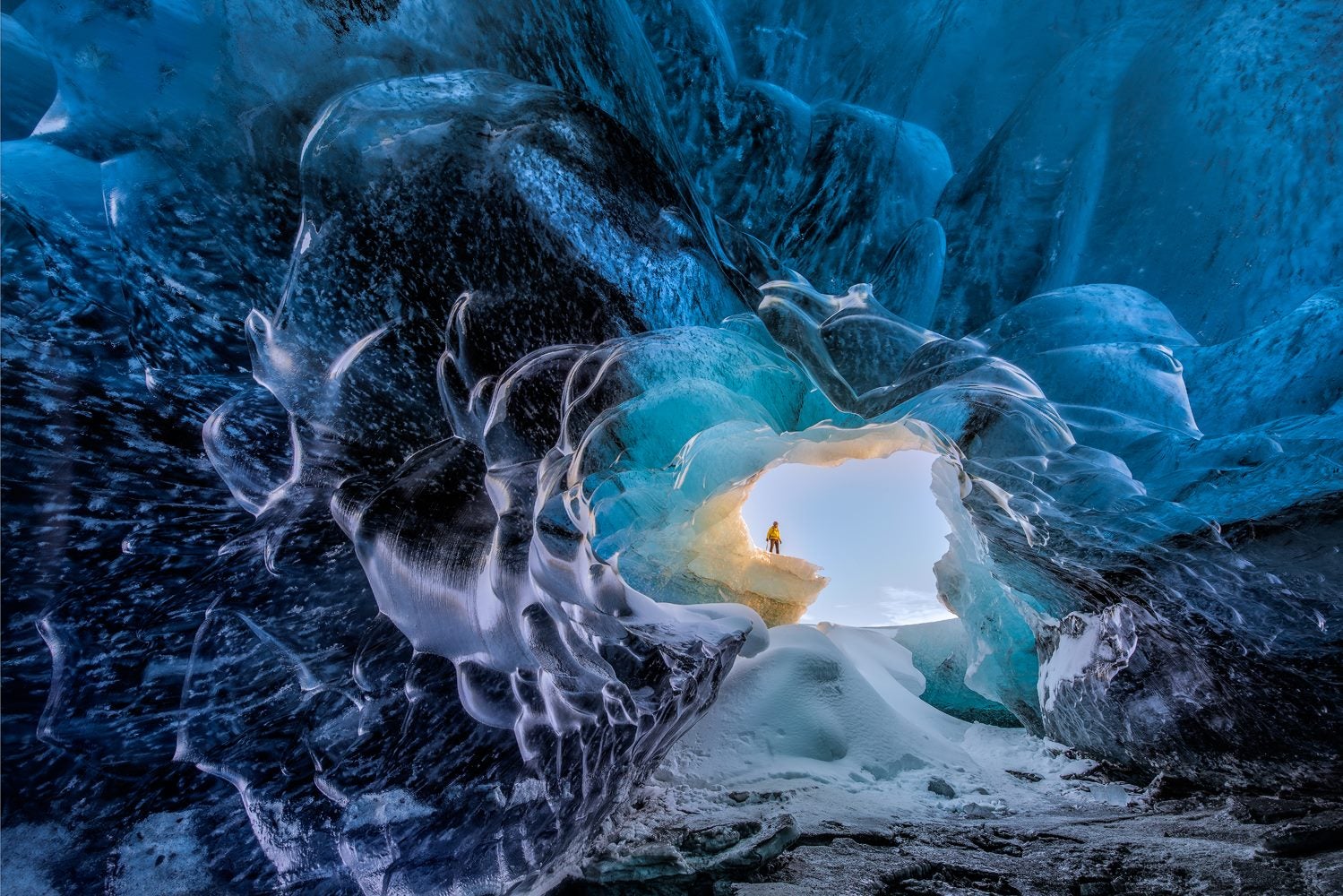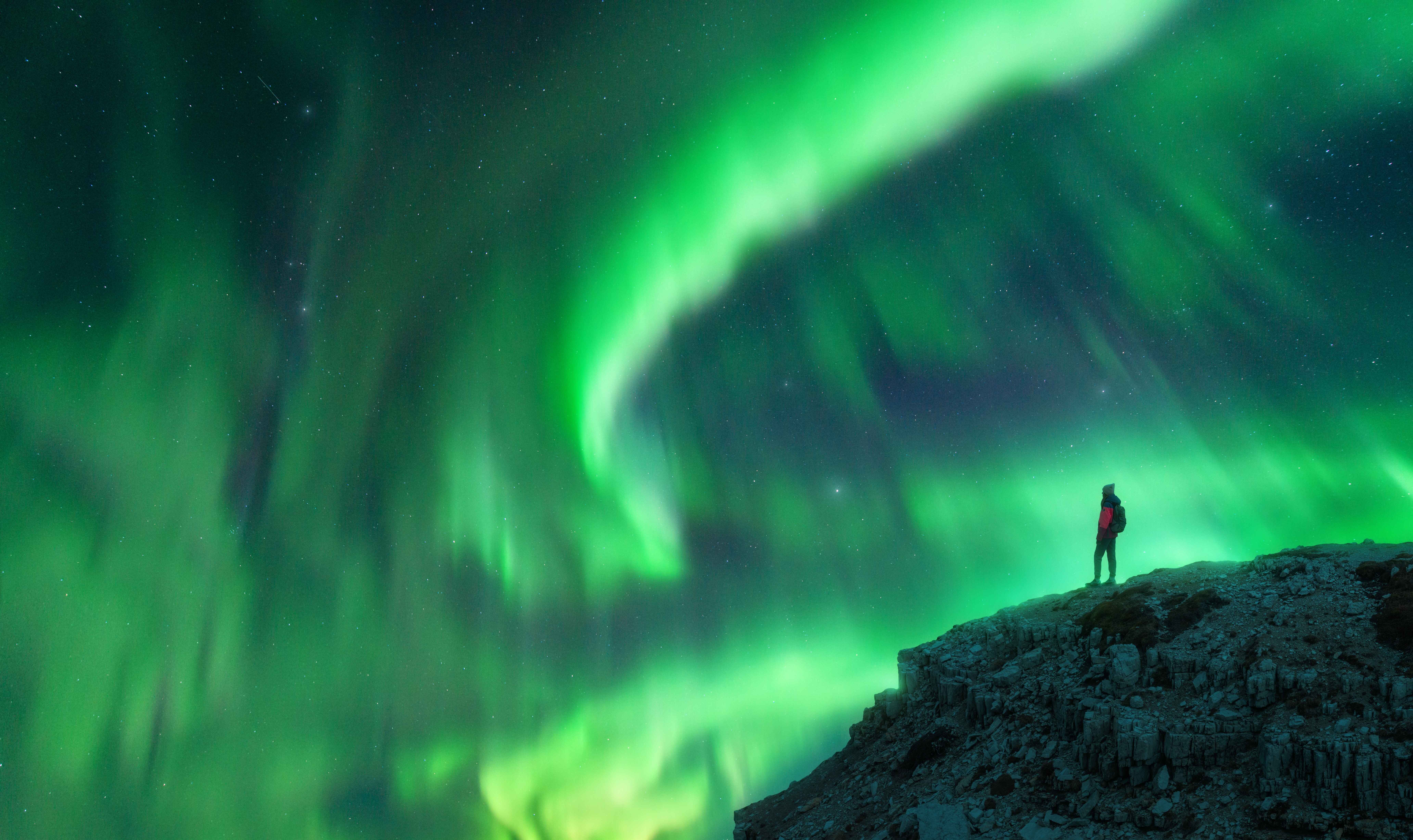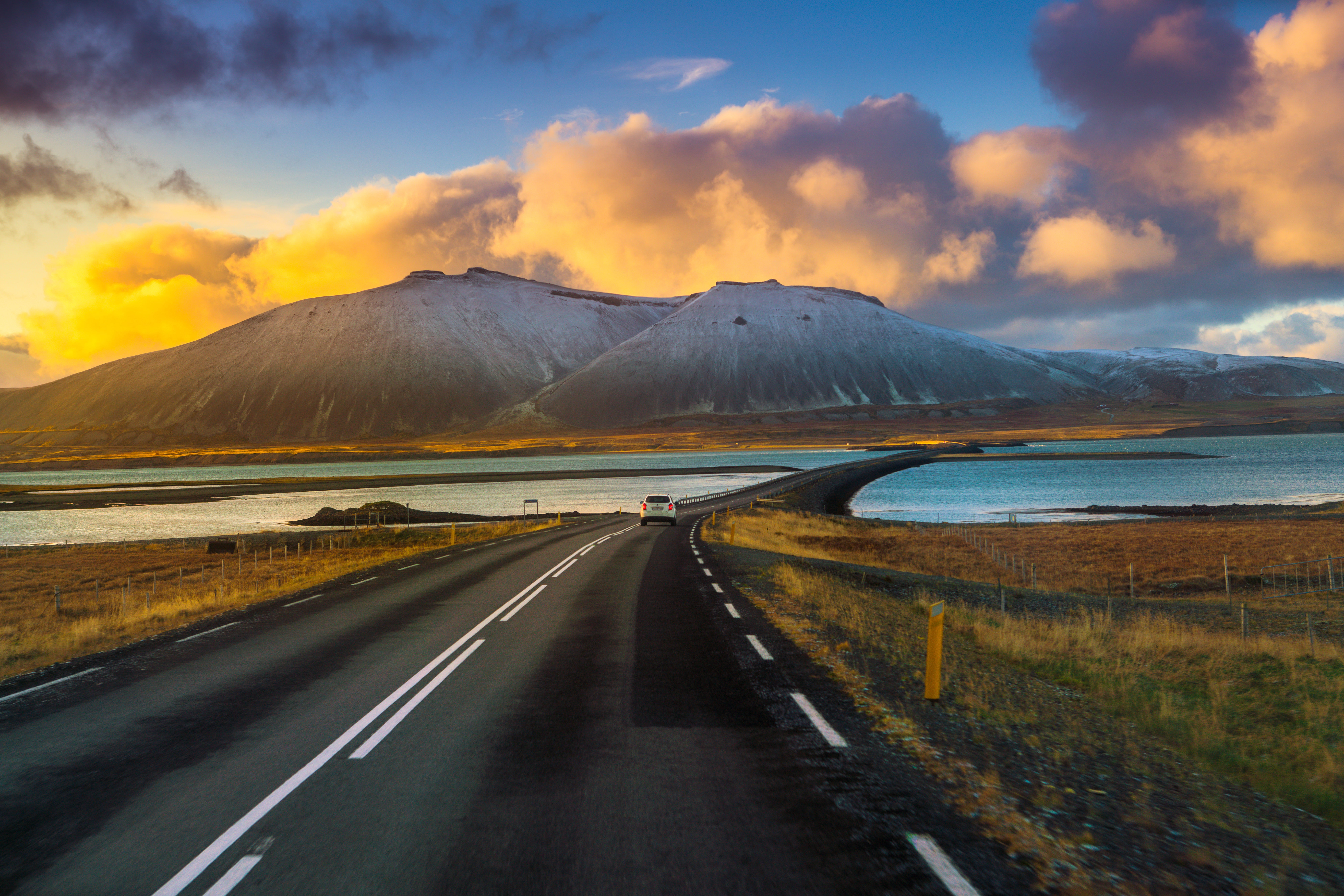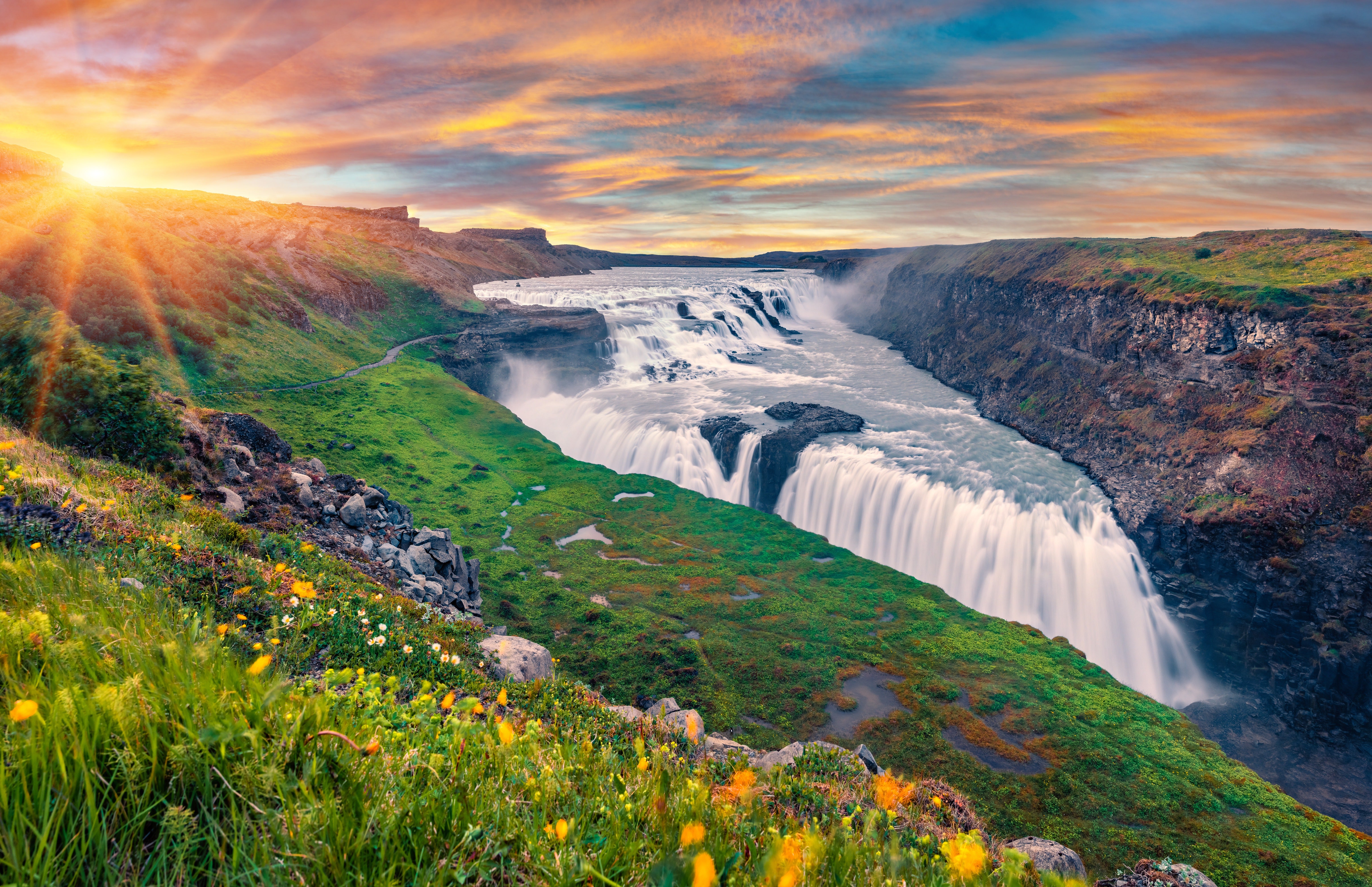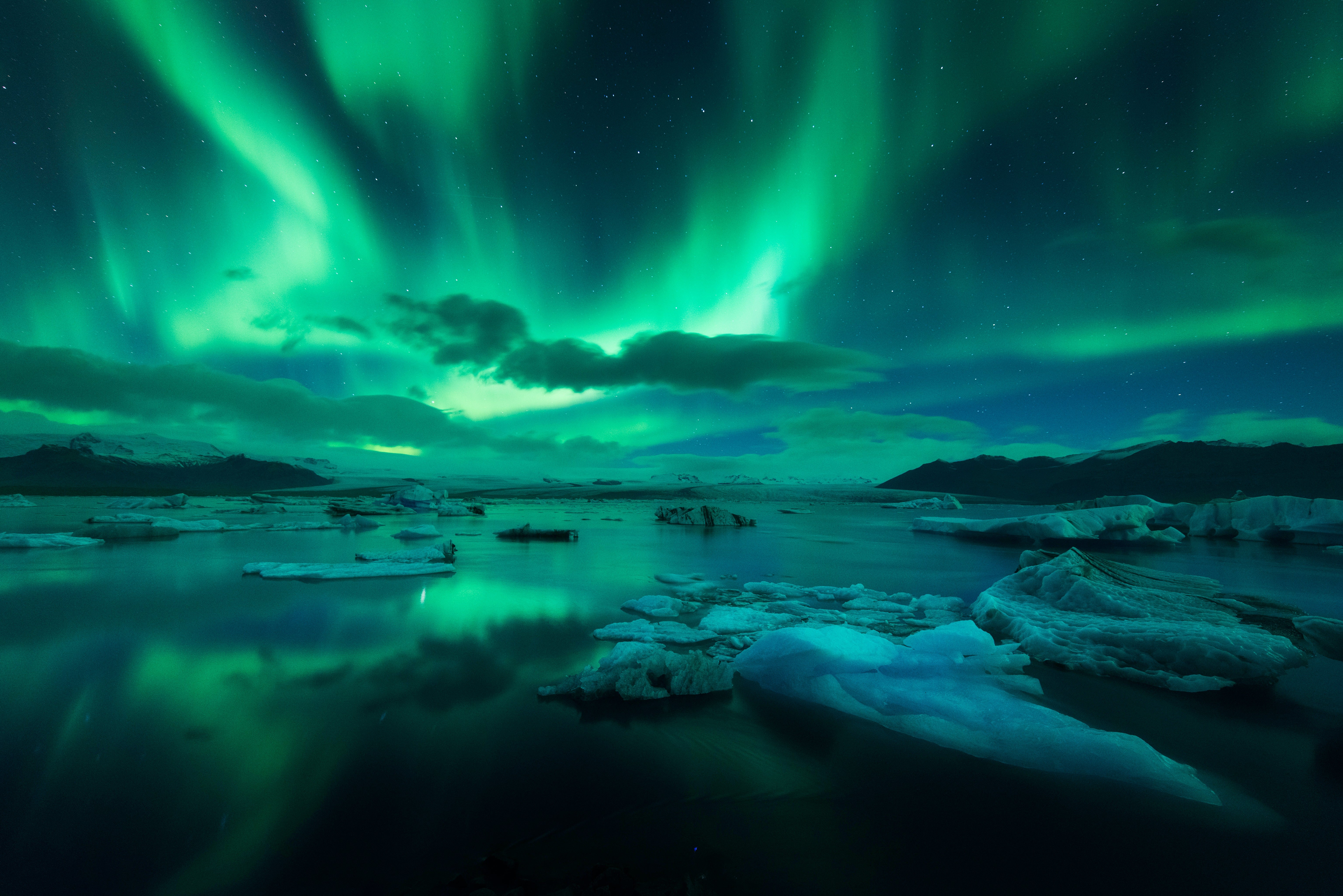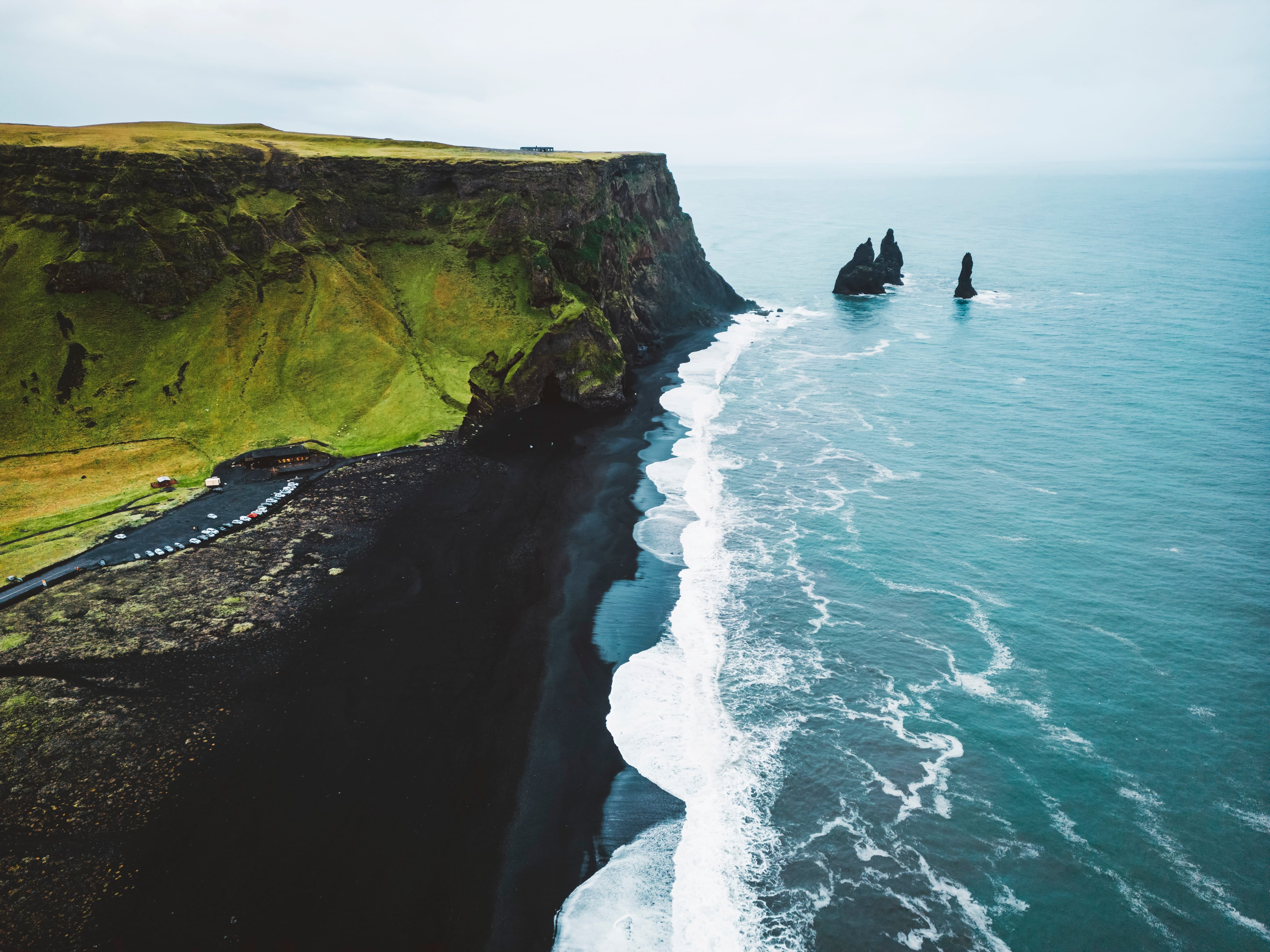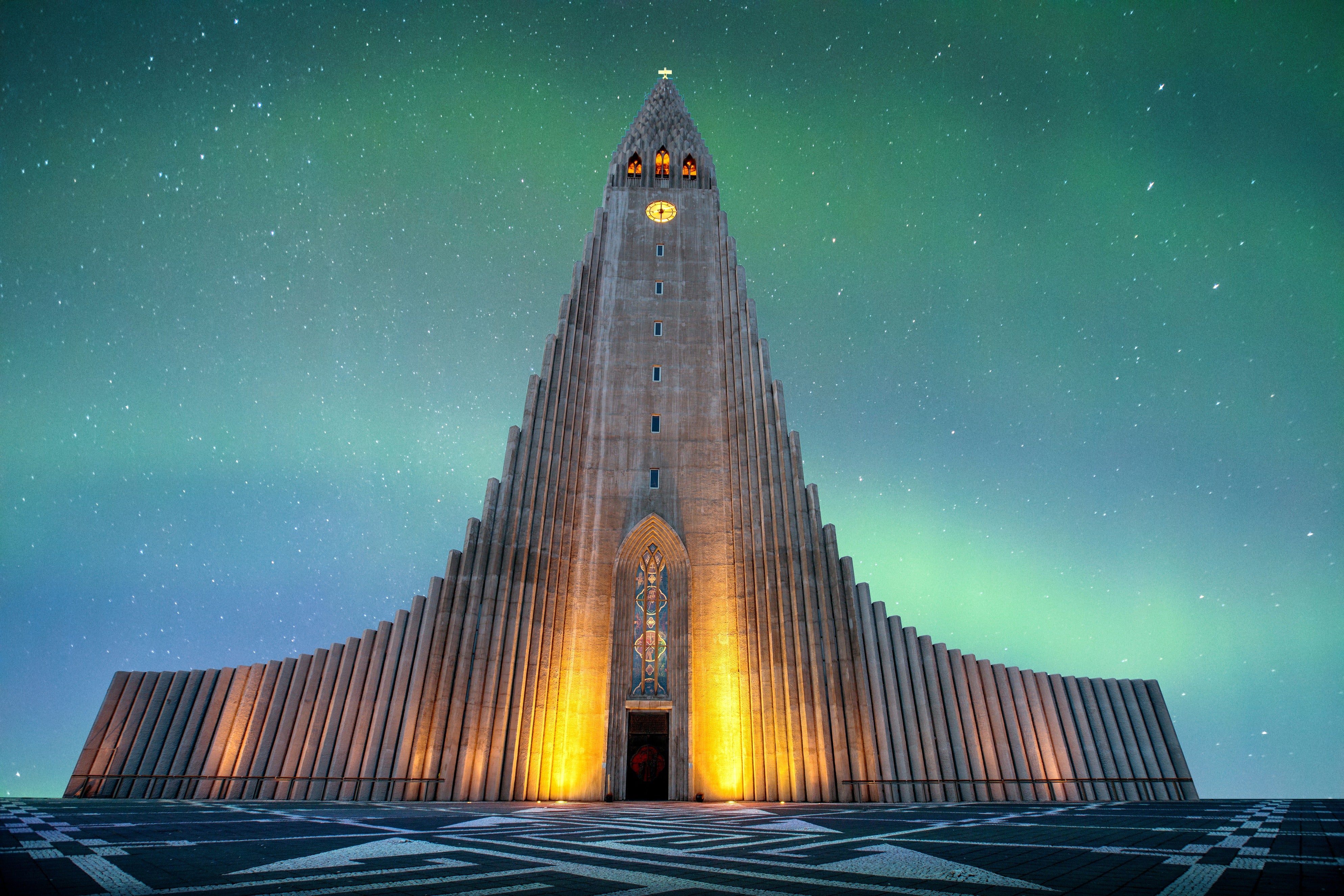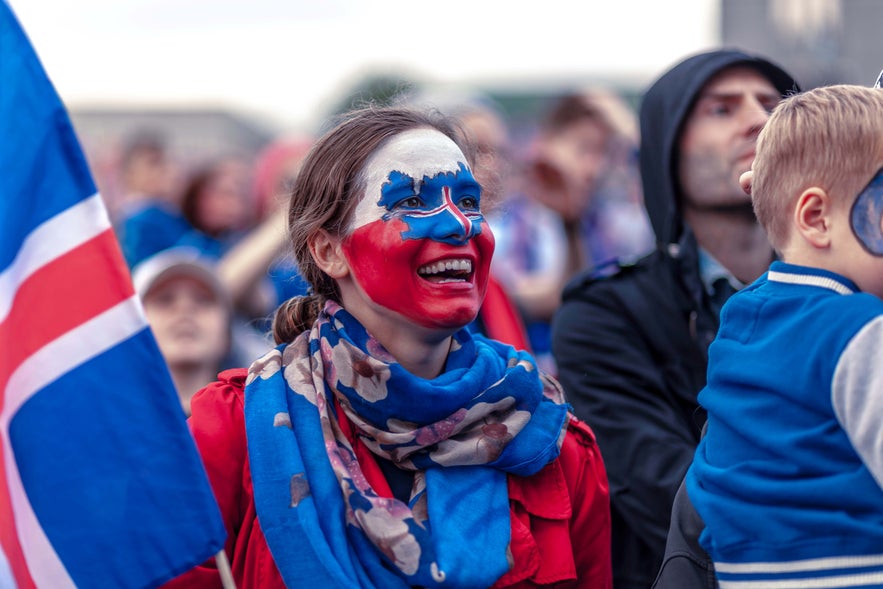
Explore the national symbols of Iceland and discover the stories behind them. Each one reflects a part of the country's identity, including mythical guardians, volcanic landscapes, iconic birds, and cultural traditions. Keep reading to uncover the rich stories they tell about Iceland’s history, values, and daily life.
Iceland is a land shaped by fire, ice, and folklore. Its national symbols capture every part of this unique identity. From powerful mythical guardians to majestic birds of prey, these emblems are more than official icons. They tell stories, preserve traditions, and connect the people of Iceland to their roots.
Why You Can Trust Our Content
Guide to Iceland is the most trusted travel platform in Iceland, helping millions of visitors each year. All our content is written and reviewed by local experts who are deeply familiar with Iceland. You can count on us for accurate, up-to-date, and trustworthy travel advice.
In this guide, you’ll learn about the coat of arms, the national flag, the gyrfalcon, and other meaningful symbols. These icons appear across the country in nature, during annual celebrations, and in everyday life, offering a window into Iceland’s rich culture and history. For those who want to experience these traditions firsthand, explore our Iceland culture tours for a deeper connection.
Key Takeaways
-
Deep Cultural Roots: Iceland’s national symbols reflect its strong Norse heritage, literary tradition, and natural identity.
-
Nature-Inspired Symbols: Many symbols, such as the national flower and coat of arms, are derived from Iceland’s dramatic landscape and wildlife.
-
Myth and Meaning: From magical creatures to ancient sagas, Icelandic symbols often blend folklore with national pride.
-
Unity and Identity: These symbols help express what it means to be Icelandic, resilient, closely tied to nature, and proud of their history.
The Icelandic Coat of Arms
Photo from Flickr by Gúnna. No edits made.
A shield guarded by a dragon, a giant, a bull, and an eagle might sound like something straight from a fantasy novel. In Iceland, though, these mythical figures are national guardians. Together, they form the Icelandic coat of arms, the country’s official emblem.
At the center of this symbol is Iceland’s national flag, a shield displaying the red cross outlined in white on a deep blue background. Around the crest are four guardian spirits called landvaettir. Each one protects a specific region of the country and symbolizes distinct qualities.
The Dragon (Dreki)
In Icelandic folklore, the dragon is the protective spirit of the Eastfjords. While dragons in Norse mythology were often seen as fierce and harmful, this one is viewed as powerful and protective.
Today, it also reflects the toughness of the people in East Iceland, a region shaped by volcanoes, fjords, and rocky mountains.
The Eagle (Örn)
The eagle watches over North Iceland. Known for its keen eyesight and alertness, it symbolizes protection and awareness. It reflects the people of the northern region, who live amid rugged fjords, towering cliffs, and vast, windswept Highlands where survival demands resilience and vigilance.
The Bull (Griðungur)
In Icelandic folklore, the bull is the protective spirit of West Iceland. It represents power, calmness, and resilience. These steady and strong animals reflect the determined communities of the West, where rugged lava fields, steep coastal cliffs, and persistent Atlantic winds shape daily life.
The Giant (Bergrisi)
Bergrisi, meaning "mountain giant," is said to have guarded southern Iceland. In local folklore, the giants called “jotnar” are known for their great strength and fierce nature. It symbolizes the resilient people of the South, living among volcanic peaks, black sand beaches, and a landscape carved by glaciers and storms.
These guardian spirits come from ancient legends, but their presence still lives on today. As key symbols of Iceland, you’ll see them on the country’s coat of arms, official buildings, and documents.
- See more: Maps of Iceland
Iceland National Flag and Its Meaning
The Icelandic national flag features a red cross outlined in white on a deep blue background. The design was created by Matthías Þórðarson in 1913 and officially adopted in 1915. It became a national symbol when Iceland gained sovereignty in 1918 and remained in use after the country declared itself a republic in 1944.
The design is called the Nordic Cross and connects Iceland to the other Scandinavian countries. But its colors tell a much deeper story. To understand the meaning of the Icelandic flag, here is what each color represents in connection to the country’s unique natural landscape.
-
Blue: Blue dominates the flag, symbolizing the vast Atlantic Ocean surrounding the island. It reflects Iceland’s strong connection to the sea and its dramatic coastal landscape.
-
White: This color represents Iceland’s glaciers, snowy peaks, and cold winters. It reflects the pristine icy features that shape much of the country's natural scenery.
-
Red: This striking red cross originally reflected the Christian symbolism of the Nordic Cross design, but today, it vividly represents Iceland’s fiery volcanoes and flowing lava. It’s a bold reminder of the dynamic natural forces that continue to shape the land.
Together, these colors portray a true land of ice and fire. As a national emblem, the Icelandic flag is a beloved symbol of unity, heritage, and pride, instantly recognizable around the world.
Iceland National Day and Its Meaning
Iceland’s National Day is celebrated every year on June 17 to mark the country’s independence from Denmark in 1944. This date was chosen to honor Jón Sigurðsson, a key leader in Iceland’s independence movement, whose birthday falls on the same day.
In Reykjavik, celebrations center around Austurvollur Square, Arnarholl Hill, and Laekjargata Street. Events include official speeches, musical performances, and children’s activities like face painting and puppet shows.
Families gather in public squares, some wearing traditional costumes and many waving Icelandic flags. Scouts often lead parades, followed by brass bands and local performers. The festive atmosphere highlights shared values, cultural identity, and national pride.
Outside the capital, towns like Akureyri, Isafjordur, and Egilsstadir host their celebrations. These typically feature community choirs, family-friendly games, local food stalls, and sometimes folk dancing or storytelling. Visitors here can enjoy a more regional and intimate experience of Icelandic traditions.
- Explore more: Public Holidays in Iceland: Dates & Traditions
The National Bird of Iceland: The Gyrfalcon
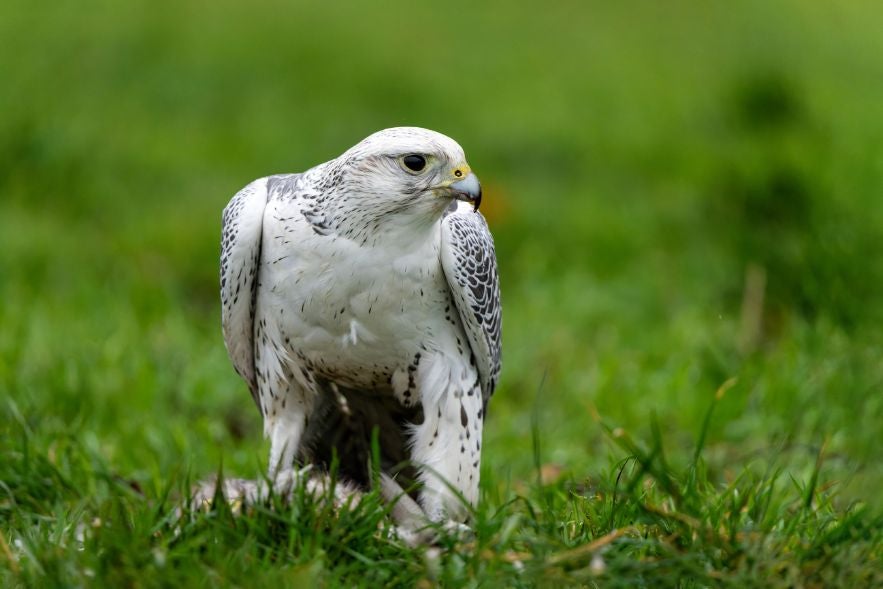
During the Middle Ages, Iceland became known for supplying gyrfalcons to European royalty. These birds were in high demand, and their value was recognized in early Icelandic law. Harming or capturing one without permission could lead to severe penalties.
Over time, it became more than a hunting companion or valuable export. The gyrfalcon came to represent nobility, endurance, and life in the country’s rugged landscapes. It was officially named the national bird of Iceland in 1984.
Today, gyrfalcons are rarely seen up close, but they sometimes appear in remote areas like the Westfjords, Skaftafell Nature Reserve, or the Highlands. Because they nest on cliffs and hunt in open landscapes, sightings are uncommon but always memorable.
This bird is one of the most important symbols of Iceland. If you want to learn more about them, the Icelandic Institute of Natural History in Gardabaer offers resources about native wildlife, including the gyrfalcon.
- You may also want to explore: Birds in Iceland
Iceland’s National Flower: Mountain Avens
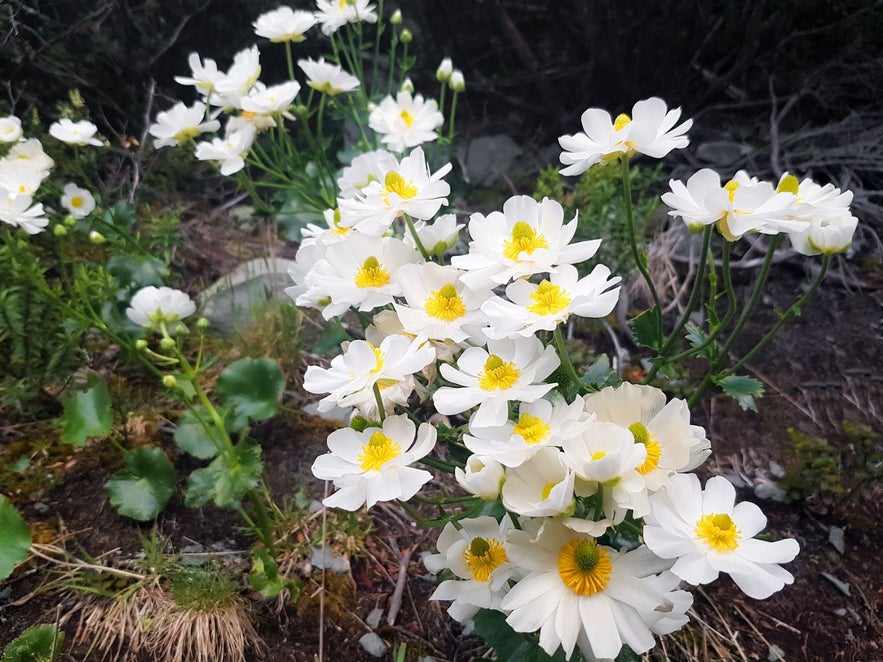
Despite its delicate appearance, the mountain avens is incredibly tough. As one of the important symbols of Iceland, it flourishes in poor soil, survives extreme cold, and blooms across Iceland each summer. Its quiet strength makes it a fitting symbol of the country’s resilience and natural beauty.
You’ll often see it in rocky areas around the Landmannalaugar Region, near Isafjordur Town, or along routes like the Laugavegur Trail and the Westfjords Way. It brightens the landscape with small white blossoms and yellow centers.
- See also: Plants in Iceland | Flora Under the Arctic Circle
- Discover more: Icelandic Flowers and Herbs – A Complete Guide
Iceland’s National Sport: Glima
Photo from Wikimedia, Creative Commons, by Willem van de Poll. No edits made.
Glima, Iceland’s national sport, is a traditional style of wrestling that dates back to the Viking Age. Unlike modern wrestling, it focuses on balance, good footwork, and fairness. The goal is to stay standing while skillfully tripping or throwing the opponent without using brute force.
Glima was initially used to train Viking warriors in agility, control, and discipline. Over time, it became a familiar part of daily life, especially on farms and at community gatherings.
Today, it continues in wrestling clubs across the country, and some schools still incorporate it into their physical education programs. As one of the enduring symbols of Iceland, the sport connects present-day culture with the nation’s early roots.
At the Viking Festival in Hafnarfjordur, held every June, visitors can usually watch glima matches that follow traditional rules. Wrestlers wear old-style belts and compete with respect and skill. These matches give a direct look at one of Iceland’s oldest and most enduring traditions.
- You might also want to see this: Football in Iceland | The Secret to Success
Iceland’s National Costume: Thjodbuningur
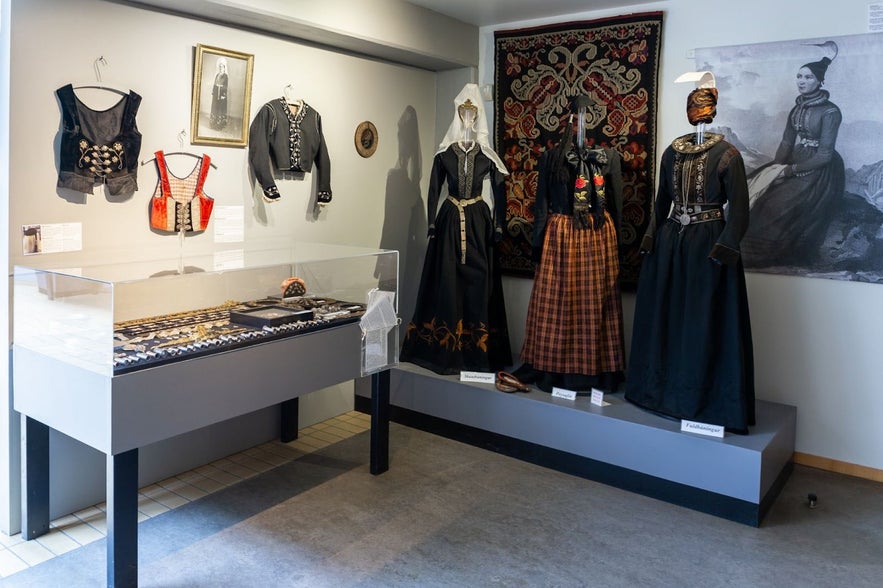
There are several traditional versions of the women’s costume, each with its own history and distinct features. These costumes vary in formality, function, and ornamentation, and offer insight into different eras of Icelandic culture:
-
Faldbuningur: A traditional costume dating back to the 17th century. It is known for its tall, curved white headpiece and was typically worn by Icelandic women of higher social standing.
-
Skautbuningur: A 19th-century adaptation of the faldbuningur. It features a long black dress, gold or silver brooches, and a flat, fan-shaped headpiece with a veil.
-
Peysubuningur: A simpler, more practical outfit that includes a knitted wool jacket (peysa) and a long skirt. It was once common everyday clothing for working women and is now worn during festive events.
-
Upphlutur: A colorful costume with a sleeveless embroidered bodice, white blouse, cap, and apron. It is often worn at festivals and is known for its decorative detail and regional styles.
Meanwhile, men’s costumes usually consist of wool jackets, knee breeches, vests, and hats. These garments are based on styles worn by Icelandic farmers in the 18th and 19th centuries.
Each outfit uses local materials like wool and linen. Traditional techniques are used to finish the garments, including hand-sewn details and silver fastenings.
You can see examples of the costumes at the National Museum of Iceland in Reykjavik, which showcases historical garments and accessories. The Textile Museum in Blonduos also features traditional outfits and focuses on weaving, embroidery, and other textile traditions.
Iceland’s National Anthem: “Lofsongur”
Iceland’s national anthem is called “Lofsongur,” which means “Hymn” in English. The lyrics were written by poet Matthías Jochumsson, and the music was composed by Sveinbjörn Sveinbjörnsson in 1874. It officially became Iceland’s national anthem in 1944, when the country declared itself a republic.
The anthem is solemn yet powerful and is sung during important events and National Day celebrations. Its words invoke God’s guidance, highlight the resilience of the Icelandic people, and honor the country’s natural beauty and hard-won independence.
Here is the first verse of “Lofsongur” in both Icelandic and English:
FAQs About the National Symbols of Iceland
Here’s a quick guide to some of the most common questions about Iceland’s national symbols.
What are the main national symbols of Iceland?
Iceland’s main national symbols include the following:
-
the coat of arms with the four guardian spirits
-
the Icelandic flag
-
the national bird, gyrfalcon
-
the national flower, mountain avens
-
the traditional costume, thjodbuningur
-
the national sport, glima
-
the national anthem, “Lofsongur”
What does Iceland’s coat of arms represent?
The coat of arms features a shield with the Icelandic flag, flanked by four landvaettir or guardian spirits: a dragon for the east, an eagle for the north, a bull for the west, and a giant for the south. These guardians symbolize protection and the unique qualities of each region of Iceland.
What do the colors of the Icelandic flag mean?
The blue represents the Atlantic Ocean, white stands for glaciers and snow, and red symbolizes volcanic fire. Together, they express Iceland’s identity as a land of fire and ice.
Why is the gyrfalcon Iceland’s national bird?
The gyrfalcon is Iceland’s national bird because it represents strength, freedom, and resilience. It inhabits remote, rugged areas and thrives in harsh conditions, much like the people of Iceland. Its long history in falconry also reflects Iceland’s cultural ties to nature and tradition.
What is the significance of the mountain avens flower?
The mountain avens is Iceland’s national flower. Despite its delicate look, it thrives in cold, rocky environments. It symbolizes resilience and the country’s connection to its natural surroundings.
What is glima, Iceland’s national sport?
Glima is a traditional form of wrestling dating back to the Viking Age. It emphasizes balance, technique, and fairness rather than brute force. Today, it remains part of Iceland’s cultural heritage and is demonstrated during festivals like Hafnarfjordur’s Viking Festival in June.
What is the traditional Icelandic national costume?
The thjodbuningur is the traditional costume worn during formal events and celebrations. Women’s versions include styles like the faldbuningur and skautbuningur, featuring distinct headpieces and detailed embroidery.
Meanwhile, men’s costumes typically feature wool jackets, breeches, and vests inspired by rural clothing from past centuries.
What is the importance of Iceland’s national anthem?
Iceland’s national anthem, “Lofsongur,” holds importance as a symbol of independence and national identity. Adopted in 1944 when Iceland became a republic, it expresses the country’s spiritual values and deep respect for nature.
The Lasting Legacy of the Symbols of Iceland
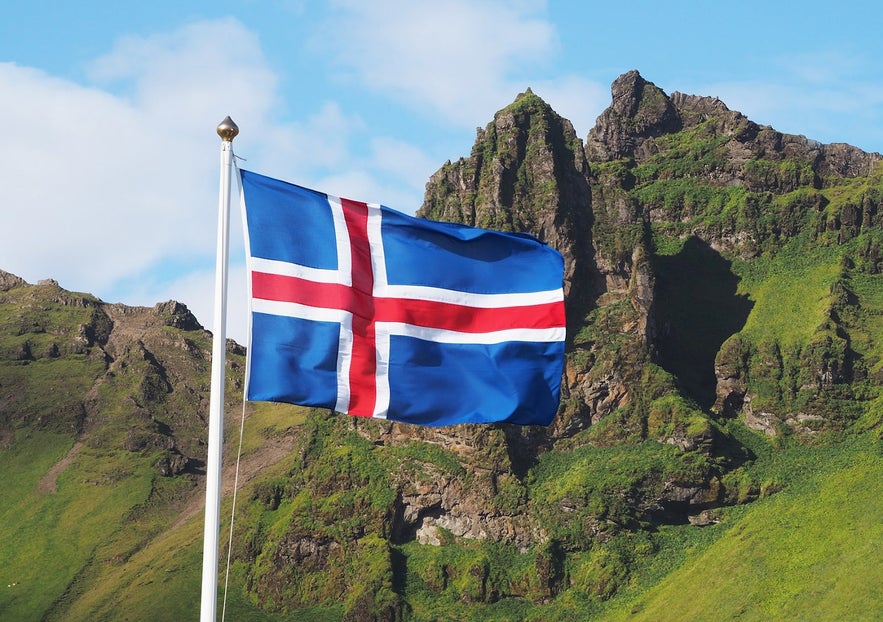
These symbols aren’t stuck in the past, either. They remain visible in parades, festivals, sports, and public spaces. They stand out in the proud notes of the national anthem and the bold colors of the flag, which continue to unite people.
So if you ever spot a gyrfalcon or see someone wearing a traditional dress, think of it as more than a symbol. Together, these emblems carry the identity of a country that honors its past while living fully in the present.
Which Icelandic symbol do you like best? The strong guardian spirits, the tough mountain avens flower, or the powerful gyrfalcon? Tell us your favorite in the comments below and why you like it!

